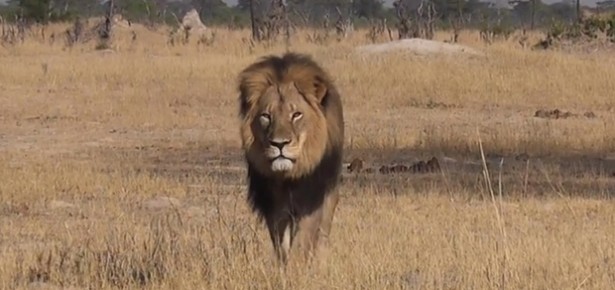
Over the last days, furious users from all over the world have been raging on social media at an American dentist who shot an iconic lion in Zimbabwe. There are calls for the hunter to be extradited to Zimbabwe and cries for him to be hunted down. Tooth for tooth for the cruel dentist who killed a beautiful and, more importantly, famous feline. The motif of the hunter turning into quarry is a deep-seated human anxiety, exemplified in the Greek myth of Actaeon, the hunter who is transformed into a deer and is torn apart by his own hounds. Only in the case of Cecil and his killer, human beings defend the wild animal and justify their aggression by dehumanizing the hunter.
The motif of the hunter turning into quarry is a deep-seated human anxiety. In the case of Cecil and his killer, human beings defend the wild animal and justify their aggression by dehumanizing the hunter
The element of transformation and the ambivalence of hunting as an act that both unites human beings with animals and divides civilization from wilderness can be seen in all its mad glory. The case of the American hunter takes on added meaning, given his fondness for killing the wildlife of a country with a long history of colonialism. And paying American dollars for the privilege of ravaging the natural beauties of a poor country certainly does not give credit to Dr. Palmer. Human anxieties and the guilt of imperialism fuel the rage against an act that in the eyes of many, including myself, is a senseless attack against nature.
This combination of imperial intrusion and environmental devastation lies at the heart of Vergil’s Aeneid, especially in an episode that bears more than fleeting similarities with the hunt of Cecil. In Aeneid 7, Aeneas and his men land on Italy, the country they are destined to colonize. Following the first diplomatic encounters between the Trojan settlers and the local king Latinus, Ascanius, Aeneas’ son, goes hunting. In the meantime, Juno unleashed the fury Allecto from the underworld in order to foment war between the settlers and the natives. Allecto turns Ascanius’ hunt into a cause for war. The fury drives on Ascanius’ hounds to chase after a much-beloved animal, the pet stag of Silvia, the daughter of king Latinus’ chief herdsman. Unaware of the animal’s special status and driven by a misguided passion for glory, Ascanius fires an arrow that wounds the beautiful stag. The arrowshot triggers a butterfly effect. The local farmers are enraged by the suffering of the animal and take up whatever arms are available against the intruders. The war that is the central focus of the second half of the Aeneid breaks out due to Ascanius’ blunder.
Ascanius, like Dr. Palmer, wounds an animal without realizing his symbolic status for the local nationals. And in both cases ignorance can hardly defend the foreigner who enters another country’s natural habitat, being oblivious to native values. The shadow of colonialism falls heavy upon the deed of Vergil’s hero and our unheroic doctor. The beauty of Silvia’s stag, which Vergil describes in moving details, makes us sympathize with the animal. Likewise, the numerous pictures and comments that focused on Cecil’s beauty had a similar effect. The wounding of Silvia’s stag results in a war, while the death of Cecil made Zimbabwe ask the US to extradite an American citizen. Personal ambitions have national repercussions.
Yet, in my view, the most Vergilian aspect of Cecil’s fate and fame is related to the explosive reactions on social media. As the news spreads fast, aggression escalates faster. Allecto personifies the harmonious cooperation of rumor and rage, hearsay and madness. Anger and angry people grow as the posts multiply. The furious hashtags, what we may consider as the most modern elements, are actually the most Vergilian. There is a Fury that urges millions of people to tweet aggressively. Her name is Allecto and she won’t stop.
Latest Comments
Have your say!